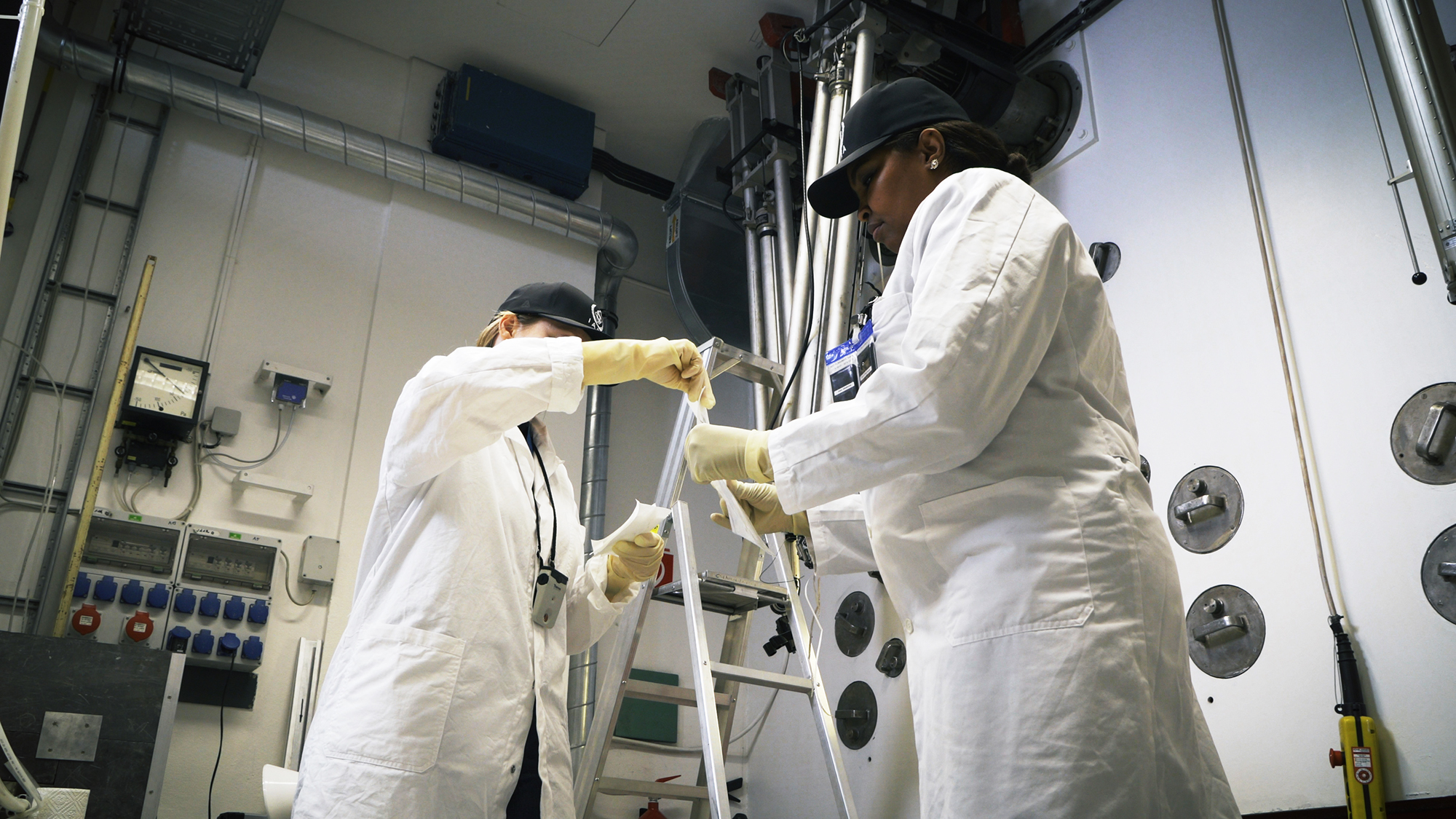The IAEA brings together analysts and experts to verify that nuclear material and technology are used only for peaceful purposes. The IAEA provides credible assurances based on information gathered from official State declarations, in-field verification activities and other safeguards relevant information. One activity that IAEA inspectors may carry out while in the field is the collection and analysis of samples — mainly nuclear material and environmental samples — from nuclear facilities and other relevant sites.
Since the 1970s, nuclear material samples have been collected for nuclear material accounting. Samples usually contain gram-sized amounts of uranium and milligram to microgram amounts of plutonium. These samples are packed in special vials and protective containers that are securely sealed and shipped to the IAEA’s Nuclear Material Laboratory in Seibersdorf, Austria, for analysis. In 2021, the Agency collected over 700 nuclear material samples.
“From the collection of samples by IAEA inspectors to the analysis in the IAEA laboratories and then final evaluation of the results in Vienna, a rigorous, quality-checked process ensures the results are correct and appropriate conclusions are derived,” said Steven Balsley, Director of the Office of Safeguards Analytical Services at the IAEA.
In the 1990s, IAEA inspectors started to conduct environmental sampling, and this has proven to be one of the most important tools used to detect undeclared nuclear material or activities. An environmental sample consists of a 10 cm x 10 cm cotton cloth that an IAEA safeguards inspector swipes across a surface to pick up millions of tiny dust particles. This dust contains information, indicating not only if nuclear material is present, but also the type (e.g. separated plutonium or highly enriched uranium), the age of the nuclear material and the presence of other materials.
“By analysing the cotton swipes that inspectors collect in the field, the IAEA can detect nuclear material at weights below one trillionth of a gram,” said Todd Mock, Safeguards Information Analyst for Environmental Sampling at the IAEA.
In 2021, the IAEA collected over 470 environmental samples. About 80 per cent of the environmental samples were analysed by 16 external laboratories that are part of the Network of Analytical Laboratories (NWAL), with the remainder analysed in Seibersdorf at the IAEA’s Environmental Sample Laboratory (ESL). Certified by the IAEA, the NWAL comprises external laboratories in IAEA Member States and at the European Commission, which supplement the work performed at the IAEA’s own laboratories in Seibersdorf.

